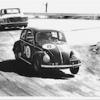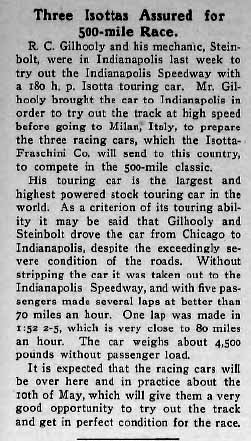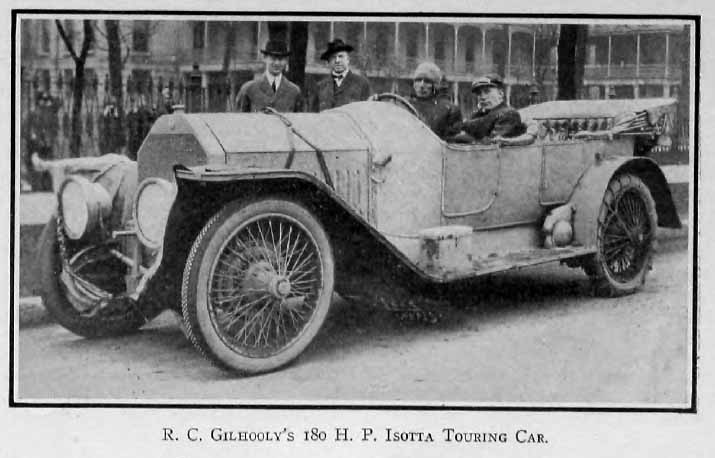Ralph Stein was a friend of people such as Henry Austin Clark, and Ralph Buckley, to name just two. If you enter his name in the aggregative book sites, you may find several of his excellent books on better built early cars at very good value. Two titles are "The American Automobile", and "The Great Cars" if my recall is accurate. Stein remarks that Ray Gilhooley, after his retirement as a racing driver of less renown, ran what Stein called an "emporium" for distinguished used cars of sporting capability in New York City.
Those big overhead camshaft Isottas must have been a handful to drive with their pioneering four wheel brakes. There were two brake pedals plus handbrake, and the un-coupled and probably un-compensated brakes probably could make the handling unpredictable for a driver less experienced with them than Minoia or Trucco.
It may seem heresy to suggest that one of Isotta Fraschini's earlier short stroke, Tipo Taunus T-head racing cars may have performed more competitively at Indianapolis that the OHC Tipo IM. If you care to study Angelo Tito Anselmi's book on Isotta you can see why. The cars that were built for the 1907 Kaiserpreis regulations were effectively prior art in the double-sided form of a T-head, of Sir Harry Rickardo's high efficiency "turbulence" combustion chamber design for L-head engines. The engine cross-section drawing on
p 228 shows that the dome of the piston almost touched the chamber roof.. The Two-spark Bosch magneto fired plugs on both sides of the engine by a segmented slip-ring with two hot ends of the secondary winding. The compression ratio may have been as high as 8 to 1, judged by the performance of one of these cars with which Minoia won the 1907 Coppa Florio. The winning car averaged just under 65 mph over the 302 miles, using only 19.8 gallons of petrol !!!! That is 15 miles per gallon for an 8 litre T-head, driven flat out!!! Three similar racing caes were built for the Isotta Import company, and raced in 1908 and later in USA by Harding, Strang, Poole, and probably others. Yet it seems that Cattaneo may not have fully understood the significance of what he had done; and F R Porter may have been the only other designer to do likewise by fluke or copy with the later T-head Mercers.
























